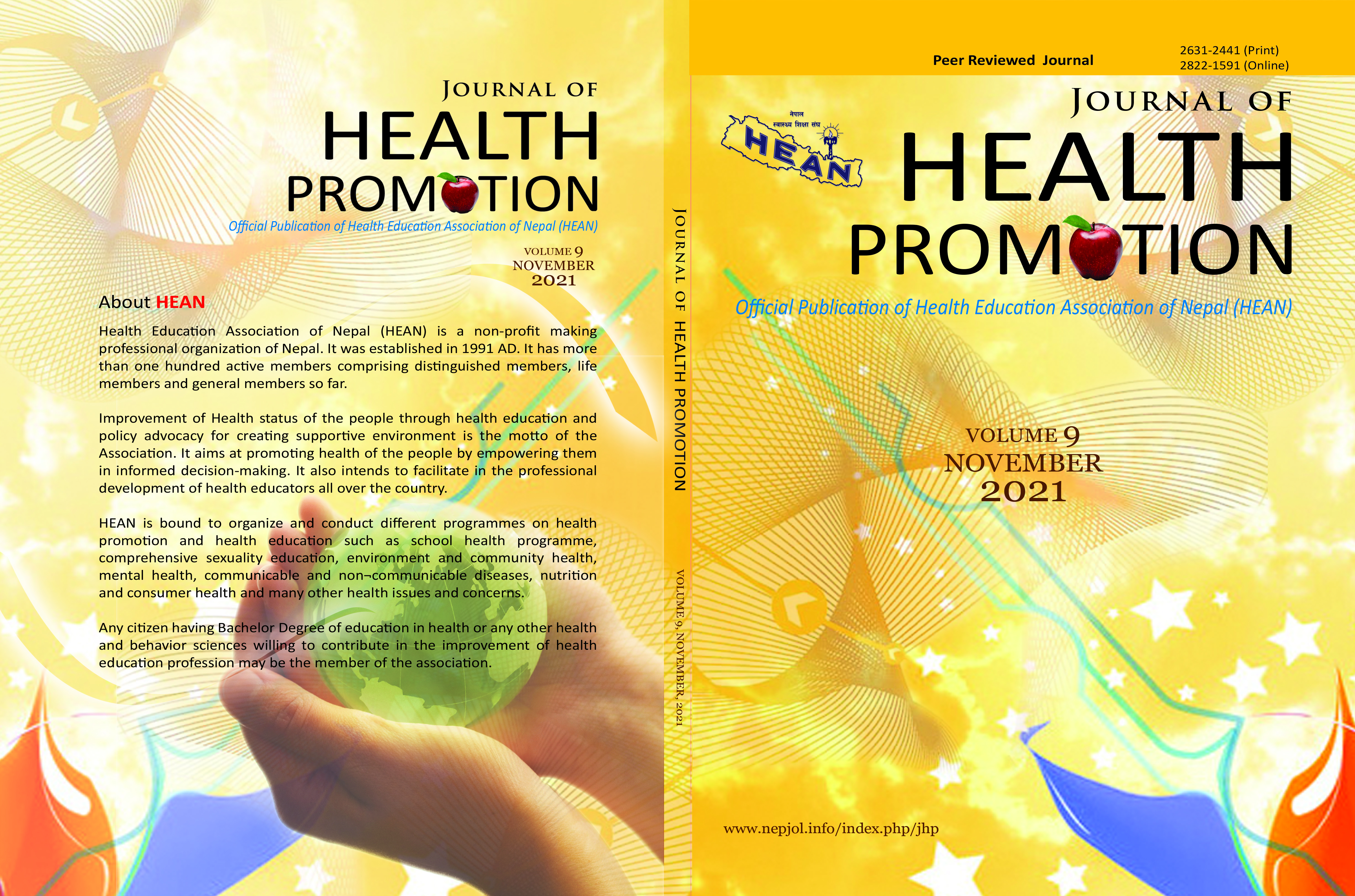Perceived threats towards COVID-19 pandemic among Nepali migrant workers returned from India
DOI:
https://doi.org/10.3126/jhp.v9i01.40970Keywords:
COVID-19, Cross-sectional design, Threat, Perception, Seasonal-migrantsAbstract
Evidence shows that the seasonal migrants returned from India have been a source of COVID-19, which helped spread it across Nepal. This cross-sectional study, guided by the Health Belief Model (HBM) model, that people's underlying believes in this case around COVID-19, is determined by a large extend their subsequent behaviors. This study aimed to examine the association between personal characteristics and perceived threats regarding COVID-19 among 384 seasonal migrants who had returned from India and were staying in a quarantine center in Surkhet, Nepal. A questionnaire was used with the help of three health workers working in the Quarantine Center. A five-point sequential grade Likert scale was constructed based on two HBM constructs, like 'perceived susceptibility' and ‘severity.' A score ≥ of 50% was designated as high, and ≤ 50% as a perceived low level of threat. Univariate and bivariate analyses were performed to interpret the data using SPSS 20 version. Generally, participants regarded the threat of COVID-19 as low. The severity of COVID-19 was thought to be greater than the vulnerability of the subjects. Gender, age, caste, education, health status, and perceived susceptibility did not correlate with perceived susceptibility. However, the participants’ demographic characteristics were associated with their perceived level of severity. Therefore, this study calls for proper risk communication to people who returned from abroad, as this is essential in promoting protective behavior during a pandemic outbreak.
Downloads
Downloads
Published
How to Cite
Issue
Section
License
© Health Education Network (HEAN)
Authors are required to transfer their copyright to the Health Education Association of Nepal (HEAN).
The materials of this publication may be reproduced, reviewed and translated, acknowledging the source "Journal of Health Promotion".




